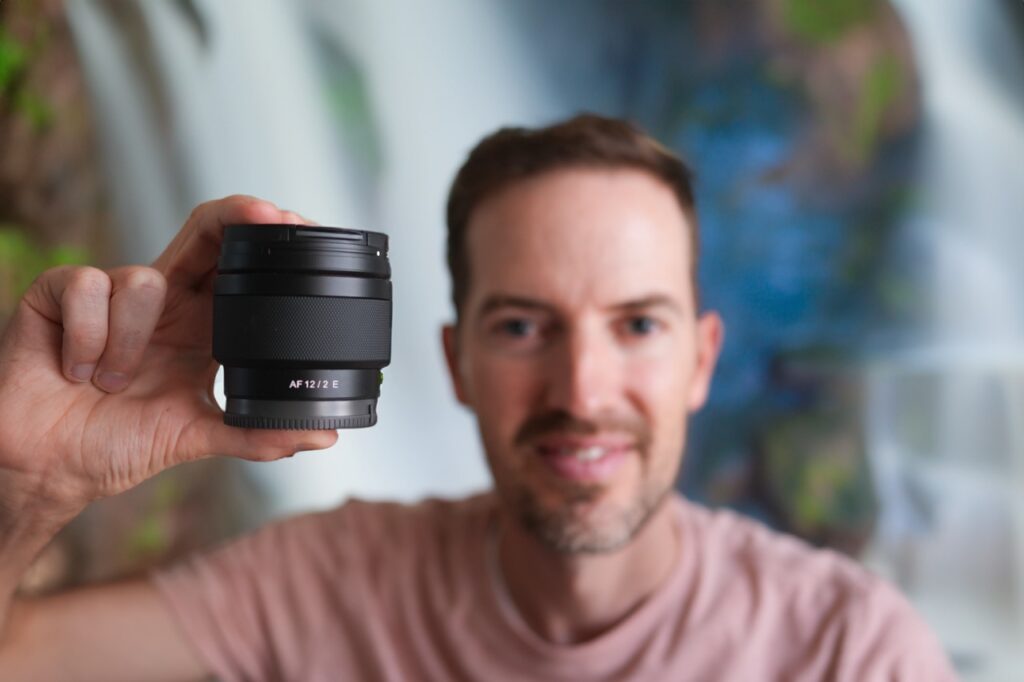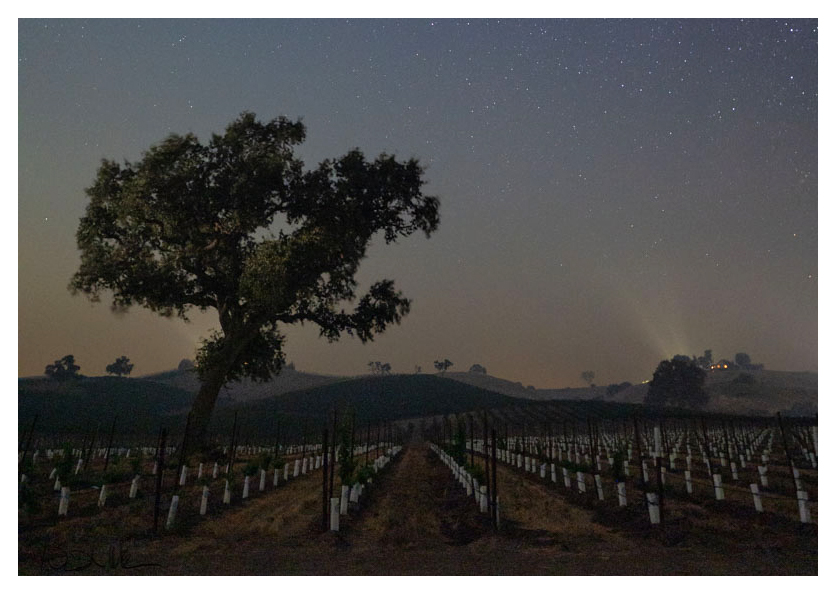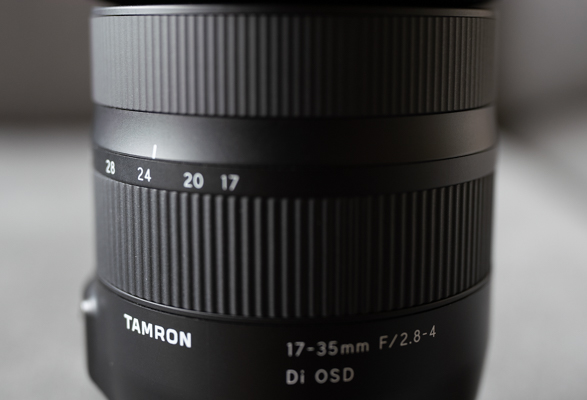The a6700 is an incredible hybrid camera with it’s enhanced autofocus, video features and AI technology. Now that’s great, but I prefer it mostly due to its size and weight.
The a6700 isn’t as light as the full frame ZV-E1, but choosing an aps-c camera means you’re using lighter lenses too, and having a lightweight setup makes all the difference for hybrid shooters.
If you want the best of the best, the Sigma 18-50mm 2.8 is my top choice for value, performance, and weight, but I’ve listed a few others you might strongly consider.
Sigma 18-50mm 2.8
This my favorite lens for its size and weight. It’s fast, sharp, and versatile for both photo and video.
Weight
10.2 oz / 290 g
Length
2.9 inches
The best overall lens
If you could only choose one lens for the a6700, I would highly recommend a fast zoom like the Sigma 18-50mm 2.8. This lens isn’t just the best budget option, it’s also similar in quality to the more expensive Sony 16-55 2.8 which is much heavier and longer in size.
The only other lens that comes close in quality and focal length is the Tamron 17-28 2.8. It’s a great option but there really isn’t much of a difference in quality and the Sigma still remains lighter and more affordable by a savings of $350.
The only downside to the Sigma 18-50mm is the slight chromatic aberration that can be corrected in post as well as ghosting with lens flare. Otherwise, the sigma is an exceptional lens for the price.
Should you buy it?
Absolutely, I would not hesitate to get this lens especially if you only have the budget for one lens for both photo and video. It has great autofocus, it’s sharp, and it has minimal distortion.
I’m always in the market for a light affordable lens, and this one takes the cake.
The best telephoto lens
The best telephoto lens for the a6700 is the Sony 70-350 5.6-6.3. This lens is especially great for landscapes, travel, and wildlife.
If you’re in the market for a great aps-c telephoto lens, you should read my other post here.
The most Lightweight telephoto lenses
Here are the only telephoto lenses that are available for APS-C. I highly recommend the Sony 70-350 4.5-6.3 for speed, sharpness, and autofocus accuracy.
Best lightweight telephoto lenses for Sony APS-C
The best lenses for video
The lenses I use the most for video on a full frame camera are the 20mm, 35mm, and the 85mm. For the a6700 that translates to using a 15mmm, 25mm, and 50mm.
The problem is that there isn’t a zoom combination with all these focal lengths that also has a maximum aperture greater than 2.8. That means you can either use one lens like the Sigma 18-50 2.8, and ignore the need for an ultrawide lens, or use a combination of primes.
I personally just prefer prime lenses, especially for the bokeh and low light abilities.
You might also consider Sony’s 16-55 2.8. It’s a little heavier than the Sigma 18-50 2.8, but it’s sharper and has better autofocus. Be sure to check out my full article on the best lenses for filmmakers.
The best primes for video shooters
I mostly shoot with primes. They’re lighter, allow for more light, and have larger maximum apertures. Prime lenses are especially great for aps-c cameras because the smaller sensor tends to have less bokeh.
My top prime lenses for video are the Sony 11mm 1.8, 24mm 1.4, and Sigma 50mm 1.4. Since I shoot both full frame and aps-c, I have the Samyang 12mm f2, Sony 24mm 1.4, and Sony 85mm 1.8.
They’re all great lenses, and I can use all of them on my Sony ZV-E1 in full frame and super 35 mode.
Best budget lens
If you only have the budget for one lens I would recommend getting a zoom like the Sigma 18-50mm 2.8.
It gives you the versatility that you need, and it’s great in low light. Most people don’t need the 1.8 bokeh that you get with a prime and 2.8 is plenty fast for most people.
The sigma 18-50mm 2.8 is also extremely affordable for what you get. This lens goes head to head with its rival – The Sony 16-50mm 2.8, and it’s smaller and lighter.
Summary
In conclusion, the Sony a6700 stands out as an exceptional hybrid camera, boasting impressive features like enhanced autofocus, advanced video capabilities, and AI technology.
However, what truly sets it apart, in my opinion, is its compact size and lightweight design. While it may not be as featherlight as the full-frame ZV-E1, the advantage of using APS-C cameras lies in the reduced weight of the lenses, resulting in a more manageable and portable setup.
If you’re looking for the ultimate combination of value, performance, and weight savings, the Sigma 18-50mm 2.8 lens emerges as a top choice. Nevertheless, there are several other noteworthy options to explore, ensuring that you can tailor your gear to suit your specific hybrid shooting needs.
Sony A7CR vs a6700 – The best small camera





